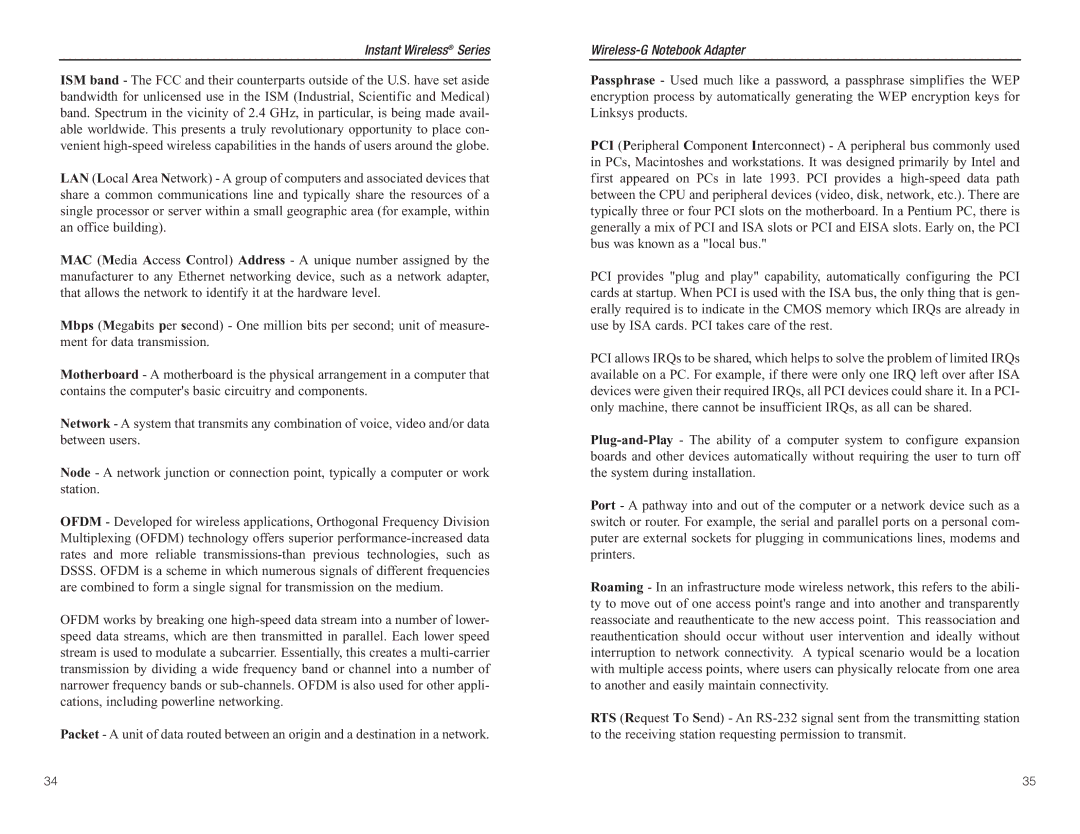WMP54G specifications
The Panasonic WMP54G is a wireless multimedia player designed to seamlessly stream digital content throughout your home. This innovative device is a perfect blend of convenience and technology, allowing users to enjoy their favorite music, photos, and videos from various sources without the need for complex setups or extensive wiring.One of the standout features of the WMP54G is its support for a wide array of multimedia formats. Users can play MP3, WMA, JPEG, and MPEG-4 files, making the device incredibly versatile and accommodating for various media types. This flexibility ensures that users can access their entire multimedia library without worrying about format compatibility.
The WMP54G uses advanced wireless technology to connect to home network environments. With its integrated Wi-Fi capabilities, users can easily connect the device to their existing wireless network, allowing for seamless streaming from their PC or network-attached storage devices. The technology ensures stable connectivity with minimal interruptions, which is crucial for a smooth viewing or listening experience.
Another significant aspect of the WMP54G is its user-friendly interface. The device is designed with simplicity in mind, featuring an intuitive menu structure that allows users to navigate their content easily. The remote control also enhances usability, giving users the power to manage their media playback from a distance without needing to get up from their comfortable seats.
The WMP54G is also equipped with a robust set of audio and video outputs, including HDMI and composite outputs. This flexibility in connectivity options ensures that users can easily connect the device to a variety of televisions and audio systems, enhancing the overall home entertainment experience.
For those who value high-quality output, the Panasonic WMP54G delivers impressive audio performance. With high-definition audio processing capabilities, users can enjoy rich, clear sound whether they’re listening to music or watching films.
In summary, the Panasonic WMP54G is a feature-rich wireless multimedia player that excels in flexibility, connectivity, and user experience. With its support for multiple file formats, advanced wireless technology, and high-quality audio and visual outputs, it represents an excellent choice for anyone looking to enhance their home media setup. Whether you're a music lover, a movie buff, or someone who simply enjoys sharing photos, the WMP54G meets and exceeds modern entertainment needs. Its combination of performance and ease of use makes it a notable device in the realm of multimedia players.
